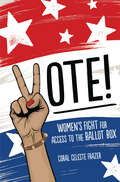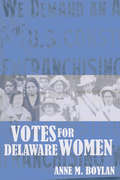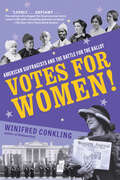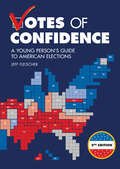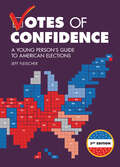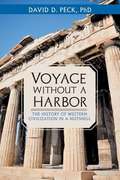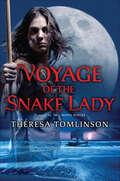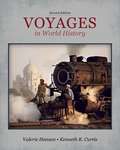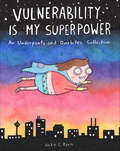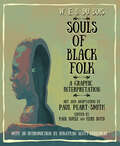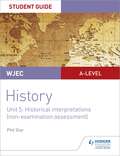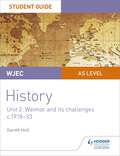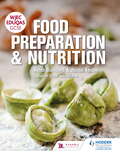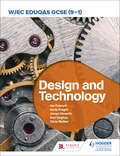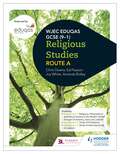- Table View
- List View
Vote!: Women's Fight for Access to the Ballot Box
by Coral Celeste FrazerAugust 18, 2020, marked the 100th anniversary of the 19th Amendment to the US Constitution, which prohibited states and the US government from denying citizens the right to vote on the basis of sex. See how the 70-year-long fight for women's suffrage was hard won by leaders such as Elizabeth Cady Stanton, Susan B. Anthony, Alice Paul, Carrie Chapman Catt and others. Learn how their success led into the civil rights and feminist movements of the mid- and late twentieth century, as well as today's #MeToo, #YesAllWomen, and Black Lives Matter movements. In the face of voter ID laws, voter purges, gerrymandering, and other restrictions, Americans continue to fight for equality in voting rights.
Votes for Delaware Women (Cultural Studies of Delaware and the Eastern Shore)
by Anne M. BoylanVotes for Delaware Women is the first book-length study of the woman suffrage struggle in Delaware, placing it within the rich historical scholarship on the national story. It looks especially at why, despite decades of suffrage organizing and an epic struggle in Dover, in the spring of 1920, the legislature refused to make Delaware the final state to ratify the Nineteenth Amendment. The book traces how, starting in the 1890s, white and African American women organized and advocated for “votes for women,” first by revising the state constitution and then through a federal amendment. Within the state’s two major suffrage organizations, the Delaware Equal Suffrage Association (DESA), an affiliate of the National American Woman Suffrage Association (NAWSA), and the Delaware branch of the National Woman’s Party (NWP), divisions over strategy and tactics widened into fissures, especially during the Great War, making it difficult to combine in a common endeavor. Delaware was unusual as a border state that was segregated but did not disfranchise African Americans. In the end, the book argues, a combination of racial and class issues doomed the ratification effort.
Votes for Women!: American Suffragists and the Battle for the Ballot
by Winifred ConklingFor nearly 150 years, American women did not have the right to vote. On August 18, 1920, they won that right, when the 19th Amendment to the Constitution was ratified at last. To achieve that victory, some of the fiercest, most passionate women in history marched, protested, and sometimes even broke the law—for more than eight decades. From Susan B. Anthony and Elizabeth Cady Stanton, who founded the suffrage movement at the 1848 Seneca Falls Convention, to Sojourner Truth and her famous “Ain’t I a Woman?” speech, to Alice Paul, arrested and force-fed in prison, this is the story of the American women’s suffrage movement and the private lives that fueled its leaders’ dedication. Votes for Women! explores suffragists’ often powerful, sometimes difficult relationship with the intersecting temperance and abolition campaigns, and includes an unflinching look at some of the uglier moments in women’s fight for the vote. By turns illuminating, harrowing, and empowering, Votes for Women! paints a vibrant picture of the women whose tireless battle still inspires political, human rights, and social justice activism.
Votes of Confidence, 2nd Edition: A Young Person's Guide to American Elections
by Jeff FleischerEvery two years, media coverage of American elections turns into a horse-race story about who's leading the polls and who said what when. Give young adult readers clear explanations about how our election process actually works, why it matters, and how they can become involved. Using real-world examples and anecdotes, this book provides readers with thorough, nonpartisan explanations about primaries, the electoral college, checks and balances, polls, fundraising, and more. Updated with facts, figures, and analysis, this edition provides the next generation of voters with essential guidance about the past, present, and future of American elections. "[A] very readable, engaging, and entertaining history of American elections and politics for young people. Highly recommended."—starred, Booklist "Fleischer presents a potentially didactic subject matter in a digestible and organized manner. Recommended for middle to high school students, educators, and others interested in becoming civically informed and engaged."—School Library Journal
Votes of Confidence, 3rd Edition: A Young Person's Guide to American Elections
by Jeff FleischerA detailed primer on the United States election cycle - newly revised and updated! Every four years, coverage of the presidential election turns into a horse-race story about who’s leading the polls and who said what when. Social media and online news have made it easier to spread false information (even by accident) and harder to know what’s accurate. It can be difficult to get good information about how the election process actually works, why it matters, or how you can get involved. Civics education and information about how our government functions is necessary whether you're a longtime voter or a soon-to-be voter. This newly revised edition includes statistics and anecdotes from recent elections alongside straightforward, nonpartisan analysis and explanation. Author Jeff Fleischer uses a fun, casual voice and real-world examples to provide an essential resource that will remain relevant long after the next president is elected. Praise for the second edition of Votes of Confidence: "A very readable, engaging, and entertaining history of American elections and politics for young people."—starred, Booklist "Reads like course notes from a beloved teacher . . . A history lesson, civics compendium, and call to action combined in one engaging volume."—School Library Journal
Voyage Without a Harbor: The History of Western Civilization in a Nutshell
by David D. PeckThis volume on Western civilization is designed to provide guidance and reliability at a fundamental level to help determine factual accuracy and relevance while navigating the proverbial mountains of information accessible today.
Voyage of the Snake Lady (Moon Raiders, The)
by Theresa Tomlinson"I have seen them!" cried Cassandra. "Iphigenia! Myrina and her young daughter! They are in terrible trouble . . . taken prisoner on a boat . . . stripped of all weapons!"Since the fall of Troy, Myrina has built the Moon Riders into a strong and potent band of warrior women. But the son of Achilles is bent on revenge, and the Moon Riders are displaced from their home and fighting for their lives.Plagued with slavery, storms, shipwreck, and strife, the Moon Riders must accept help from outsiders for their very survival. Only trust in the strong bonds of their friendship will help Myrina, Iphigenia, and Cassandra vanquish their enemies and welcome those who may help them achieve a more peaceful way of life.Like its predecessor, this sequel to The Moon Riders is a powerful blend of intriguing myth and inspired imagination, leavened by romance and unforgettable characters.
Vulnerability Is My Superpower: An Underpants And Overbites Collection (Underpants and Overbites Collection)
by Jackie E. DavisVulnerability Is My Superpower features Jackie Davis's relatable diary comics about self-discovery, mental health, relationships, and childhood. From bouts with anxiety and insecurity to the thrill of simple pleasures like secretly trying on other people&’s coats at a party, she&’s figuring things out as she goes along, navigating domestic life with her husband, Pat (aka &“the Purple Guy&”), and sharing her most embarrassing thoughts and habits so you don&’t have to.For anyone who struggles with self-confidence or just likes to scrutinize the curious workings of relationships and everyday life, the confessional comic gems in this book invite laughter at even the most awkward and vulnerable moments while making you feel less alone.
Vyavsay Adhyan TBC class 11 - MP Board: व्यापाय अधयन टीबीसी कक्षा 11 - एमपी बोर्ड
by Madhyamik Shiksha Mandal Madhya Pradesh BhopalVyavsay Adhyan TBC text book for 11 th standard from Madhyamik Shiksha Mandal Madhya Pradesh Bhopal in Hindi.
Vyavsay Adhyan class 11 - MP Board: व्यवासाय अधयन कक्षा 11 - एमपी बोर्ड
by Madhyamik Shiksha Mandal Madhya pradesh BhopalVyavsay Adhyan text book for 11th standard from Madyamik Shiksha Mandal Madhya Pradesh Bhopal in Hindi
Vyavsayik Arthashastra class 11 - MP Board: व्यवासायिक अर्थशास्त्र कक्षा 11 - एमपी बोर्ड
by Madhyamik Shiksha Mandal Madhya Pradesh BhopalVyavshik Arthshastra text book for 11th standard from Madhyamik Shiksha Mandal Madhya Pradesh Bhopal in Hindi.
Vyavsayik Arthashastra class 11 - MP Board: व्यवासायिक अर्थशास्त्र कक्षा 11 - एमपी बोर्ड
by Madhyamik Shiksha Mandal Madhya Pradesh BhopalBusiness Economics (MPTBC) text book for 11 th standard from Madhyamik Shiksha Mandal Madhya Pradesh Bhopal in Hindi.
Vyavsayik Arthashastra class 12 - MP Board: व्यवासायिक अर्थशास्त्र कक्षा 12 - एमपी बोर्ड
by Madhya Pradesh Rajya Shiksha MandalVyavsayik Arthashastra text book for 12th standard from Madhya pradesh rajya shikha mandal in Hindi.
W. E. B. Du Bois Souls of Black Folk: A Graphic Interpretation
by W. E. Du Bois (1868-1963) Paul Peart-Smith“The problem of the twentieth century is the problem of the color line.” These were the prescient words of W. E. B. Du Bois’s influential 1903 book The Souls of Black Folk. The preeminent Black intellectual of his generation, Du Bois wrote about the trauma of seeing the Reconstruction era’s promise of racial equality cruelly dashed by the rise of white supremacist terror and Jim Crow laws. Yet he also argued for the value of African American cultural traditions and provided inspiration for countless civil rights leaders who followed him. Now artist Paul Peart-Smith offers the first graphic adaptation of Du Bois’s seminal work. Peart-Smith’s graphic adaptation provides historical and cultural contexts that bring to life the world behind Du Bois’s words. Readers will get a deeper understanding of the cultural debates The Souls of Black Folk engaged in, with more background on figures like Booker T. Washington, the advocate of black economic uplift, and the Pan-Africanist minister Alexander Crummell. This beautifully illustrated book vividly conveys the continuing legacy of The Souls of Black Folk, effectively updating it for the era of the 1619 Project and Black Lives Matter.
WJEC A-level History Student Guide Unit 4: Nazi Germany Epub
by Gareth HoltExam board: WJECLevel: AS/A-levelSubject: HistoryFirst teaching: September 2015First exams: Summer 2016 (AS); Summer 2017 (A-level)Build, reinforce and revise the historical knowledge and exam skills required for WJEC AS/A-level History.Matched to the 2016 specification for Wales, this study guide contains clear content summaries and annotated sample answers to exam questions.- Concisely covers the key issues and content in the specification, breaking the Unit down into manageable chunks- Consolidates understanding with regular knowledge-check questions, plus useful tips- Builds the analytical and evaluative skills that students need to succeed in AS/A-level History- Improves students' exam technique, providing sample student answers to past paper questions, with commentary to explain the number of marks awarded- Helps students to learn the content throughout the course, study independently and revise for their exams
WJEC A-level History Student Guide Unit 5: Historical Interpretations (non-examination assessment)
by Phil StarExam board: WJECLevel: AS/A-levelSubject: HistoryFirst teaching: September 2015First exams: Summer 2016 (AS); Summer 2017 (A-level)Maximise your chance of coursework success with this step-by-step guide to the WJEC A-level History NEA.- Explains how to understand, approach and successfully answer the question/essay title, with tips to highlight important information and common pitfalls- Develops students' skills in analysing and evaluating primary source material- Teaches students how to identify and test the validity of historical interpretations- Offers extensive advice on essay writing, including drafting an effective introduction and conclusion- Provides one complete example of the NEA with annotations/commentary that show how it could be improved- Keeps students on track as they complete activities that help to structure their progress
WJEC AS-level History Student Guide Unit 2: Weimar And Its Challenges Epub
by Gareth HoltExam board: WJECLevel: AS/A-levelSubject: HistoryFirst teaching: September 2015First exams: Summer 2016 (AS); Summer 2017 (A-level)Build, reinforce and revise the historical knowledge and exam skills required for WJEC AS/A-level History.Matched to the 2016 specification for Wales, this study guide contains clear content summaries and annotated sample answers to exam questions.- Concisely covers the key issues and content in the specification, breaking the Unit down into manageable chunks- Consolidates understanding with regular knowledge-check questions, plus useful tips- Builds the analytical and evaluative skills that students need to succeed in AS/A-level History- Improves students' exam technique, providing sample student answers to past paper questions, with commentary to explain the number of marks awarded- Helps students to learn the content throughout the course, study independently and revise for their exams
WJEC Biology AS Student Unit Guide: Unit BY1 eBook ePub Basic Biochemistry and organisation
by Dan Foulder Asuman Celen PollardPerfect for revision, these guides explain the unit requirements, summarise the content and include specimen questions with graded answers.Endorsed by WJEC, this full-colour Student Unit Guide provides ideal preparation for your unit exam:Feel confident you understand the unit: each guide comprehensively covers the unit content and includes topic summaries, knowledge check questions and a reference indexGet to grips with the exam requirements: the specific skills on which you will be tested are explored and explainedAnalyse exam-style questions: graded student responses will help you focus on areas where you can improve your exam technique and performance
WJEC Biology Student Guide 1: Basic biochemistry and cell organisation
by Isobel Rollitt James Dan FoulderWritten by experienced teacher Dan Foulder, this Student Guide for Biology:- Identifies the key content you need to know with a concise summary of topics examined in the AS and A-level specifications- Enables you to measure your understanding with exam tips and knowledge check questions, with answers at the end of the guide- Helps you to improve your exam technique with sample answers to exam-style questions- Develops your independent learning skills with content you can use for further study and research
WJEC Biology Student Guide 2: Biodiversity and physiology of body systems
by Andy ClarkeWritten by experienced teacher Andy Clarke, this Student Guide for Biology:- Identifies the key content you need to know with a concise summary of topics examined in the AS and A-level specifications- Enables you to measure your understanding with exam tips and knowledge check questions, with answers at the end of the guide- Helps you to improve your exam technique with sample answers to exam-style questions- Develops your independent learning skills with content you can use for further study and research
WJEC EDUQAS GCSE Food Preparation and Nutrition
by Helen Buckland Jacqui KeepinEngage your students in all aspects of food and nutrition with this book that will develop their knowledge and understanding, improve their practical food preparation and cooking skills and prepare them for assessment of the new WJEC EDUQAS Food Preparation and Nutrition GCSE.- Ensures your students understand subject content with accessible explanations of all concepts, including simple definitions of key words- Develops cooking and food preparation skills with engaging and cost-effective practical activities throughout- Differentiates with stretch and challenge activities to ensure progression and to challenge more able learners- Includes extensive guidance on the Food Preparation and Nutrition in Action non-examination assessment tasks- Prepares students for the written exam with exam preparation advice and practice questions with worked answers, mark schemes and commentary
WJEC Eduqas GCSE (9-1) Design and Technology
by Ian Fawcett Dan Hughes Jacqui HowellsExam board: WJEC EduqasLevel: GCSESubject: Design & TechnologyFirst teaching: September 2017First exams: Summer 2019Reinforce classroom learning and boost students' understanding of all materials with this textbook written for the WJEC Eduqas GCSE (9-1) Design & Technology specification.Written by leading D&T experts, this textbook will build your students' knowledge of the core principles, help to develop their designing and making skills and provide them with the opportunity to make sure they are ready to tackle both parts of the assessment. - Helps students clearly understand the core principles of all materials and general concepts of designing and making, as well as build their knowledge, understanding and skills for one material or system in more depth- Hones students' mathematical and scientific ability so they don't miss out on the easy marks- Features practice questions in the style of the written exam to make sure students are confident to tackle the written element of the assessment- Inspires and motivates students with stretch and challenge: activities designed to challenge the more able learners and to ensure progression to A-level
WJEC Eduqas GCSE (9-1) Religious Studies
by Joy White Chris Owens Ed PawsonBring out the best in every student, enabling them to develop in-depth subject knowledge with this accessible and engaging Student's Book, created for the 2016 specification by a team of subject specialists and the leading Religious Studies publisher.- Helps students of all abilities fulfil their potential and increase their understanding through clear, detailed explanations of the key content and concepts- Motivates students to build and cement their knowledge and skills using a range of imaginative, innovative activities that support learning and revision- Provides a variety of quotes from sources of authority that students can draw on to enhance their responses and extend their learning- Encourages students to make links between the world religions and philosophical and ethical issues so they develop a holistic view of religion in modern Britain- Prepares students for examination with a rich bank of exam-style questions, guidance on how to improve responses and student-friendly assessment criteria- Enables you to teach unfamiliar topics and systematic studies confidently with clear explanations of Christian, Catholic Christian, Islamic and Judaic beliefs and practices, verified by faith organisationsWJEC Eduqas GCSE RSComponent 1: Religious, philosophical and ethical studies in the Modern World1 Issues of Relationship2 Issues of Life and Death3 Issues of Good and Evil4 Issues of Human RightsComponent 2: 5 Beliefs and teachings6 Christianity: PracticesComponent 3: Study of a World Faith - Islam7 Islam: Beliefs and teachings8 Islam: PracticesComponent 3: Study of a World Faith - Judaism9 Judaism: Beliefs and teachings10 Judaism: Practices
